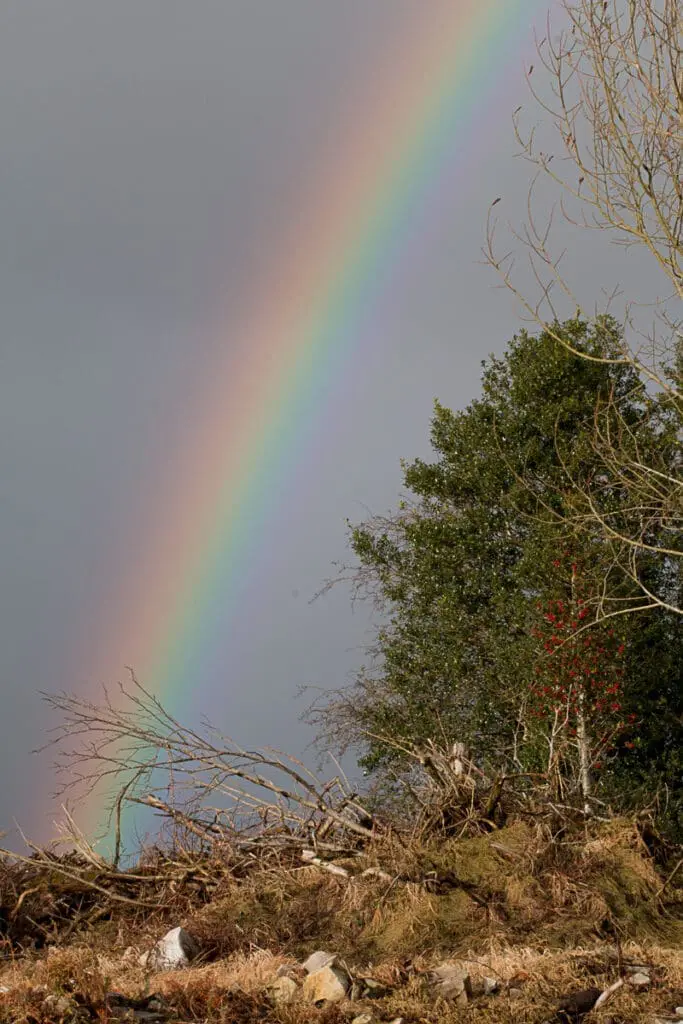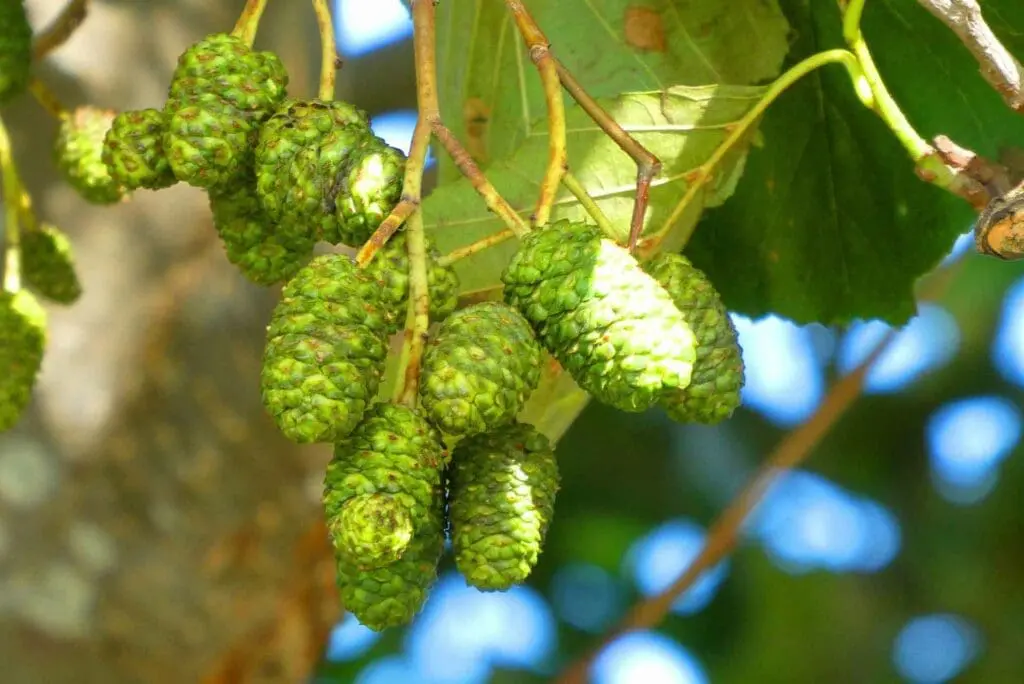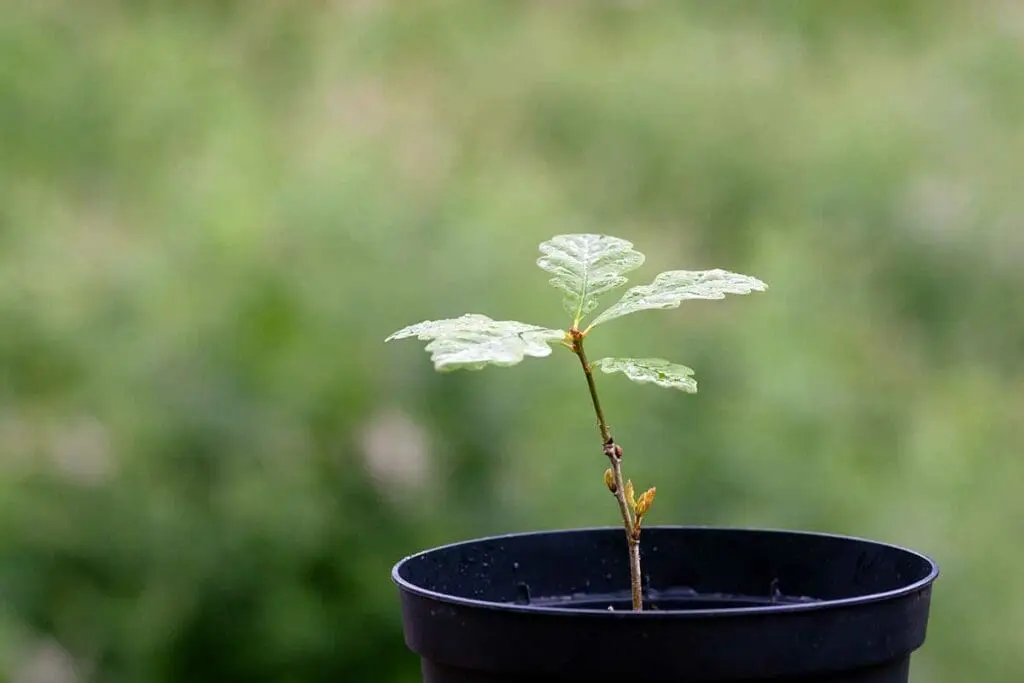- Common name: Holly
- Scientific name: Ilex aquifolium
- Family: Holly (Aquifoliaceae)
- How to grow Holly
The European Holly is an evergreen tree native to the UK, Ireland and most of western Europe. Like many other evergreen trees, it has thick, waxy leaves that help resist water loss in winter.
Holly is important for wildlife. The spring generation of caterpillars of the Holly Blue butterfly (Celastrina argiolus) feed predominantly on the flower buds, berries and terminal leaves of holly.
![Female Holly blue butterfly (Celastrina argiolus) by Charles J Sharp [CC BY-SA 3.0 (https://creativecommons.org/licenses/by-sa/3.0)] Female Holly blue butterfly](https://nativetreesfromseed.com/wp-content/smush-webp/2019/09/Holly_blue_butterfly_Celastrina_argiolus_female-1024x684.jpg.webp)
Holly leaves
Holly is evergreen, so it keeps its leaves all year round.
The alternate leaves are up to 10cm long. Their top surface is dark-green and glossy, the veins are lime green/yellow and the lower surface is yellowish and matt.
The holly leaf can be described as ovate (oval), elliptic or oblong in shape. The edge of the leaf is often wavy with sharp spines.
Usually, holly leaves spines up to a few meters high. But higher up, where animals can’t reach to eat them, the leaves have smooth edges.
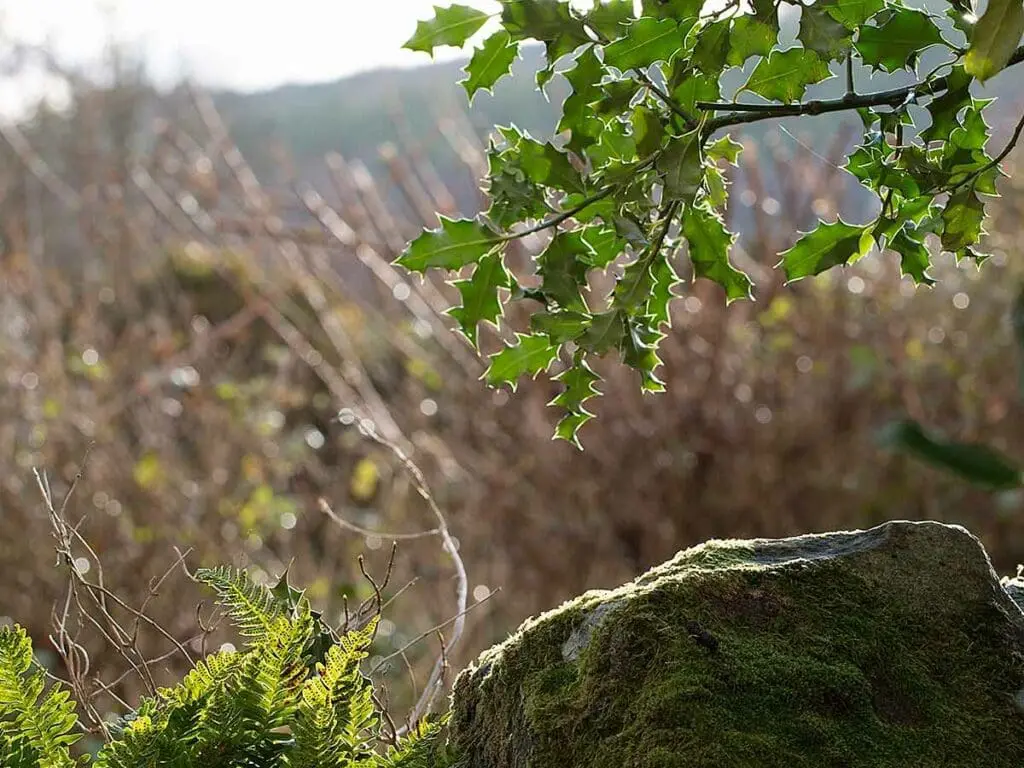
Holly flowers
Holly flowers are small, delicate, and often overlooked. Typically appearing in late spring to early summer (May/June in the UK), these flowers are white or pale green and grow in clusters along the stems.
Each flower has four petals, arranged in a star shape, and they emit a subtle, sweet fragrance. The flowers are dioecious, meaning that male and female flowers grow on separate trees.
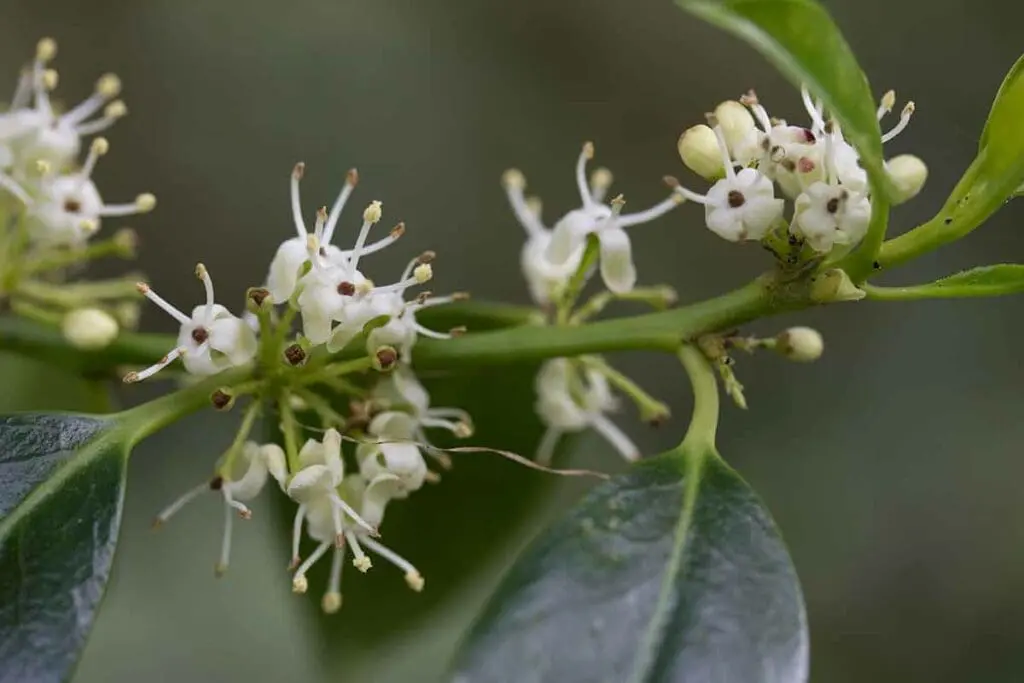
Holly berries
Female flowers, if pollinated, will develop into the bright red berries that holly is famous for. The berries are round and bright red, each containing four small, ridged seeds.
The berries may remain on the tree through the winter, providing food for birds, which will disperse the seeds in their poop!
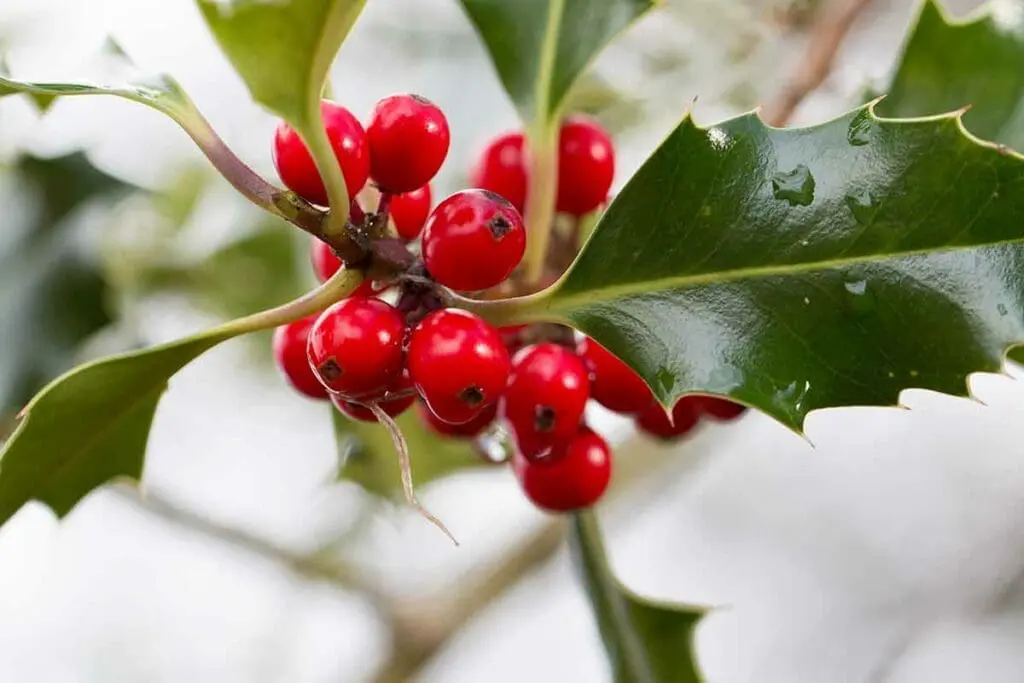
Bark
Young holly trees have green stems that help the plant make food from sunlight (through the process of photosynthesis).
As the tree gets older, its bark turns silvery or dark grey, but stays thin and smooth.
Holly wood is hard, white, and dense, making it great for carving. It burns well, even right after being cut down. Even the green leaves can catch fire easily.

Habitat
Holly trees grow in places with mild winters and lots of summer rain, like regions on the Atlantic, and in higher, cooler areas of the Mediterranean. They can grow in many different types of soil, but they like acidic soil best.
Holly trees do well in semi-shaded areas, but in Mediterranean climates, they need to be in full shade. These trees grow slowly and can live up to 300 years if they have the right conditions.
A tree of many different plant communities, holly occurs mostly as smaller trees under bigger trees or at the edges of forests. You’ll often find them in forests with oak trees (like Pedunculate Oak and Sessile Oak) or beech (Fagus sylvatica).
